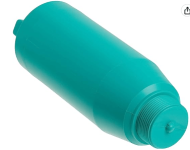We suspected a leak from having to add water more often, but now I'm fairly certain of it. The June->July bill went from 10 CCF last year to 20 CCF this year. Our often suspected spot is the skimmer, so I turned off the pump and dropped some egg-coloring solution into it (these are the tablets that get dissolved in water/vinegar to paint Easter eggs), but I saw it go nowhere except to just spread out. I will try with a dropped later and drop the paint closer to the corners of the skimmer intake.
What sort of other troubleshooting can I do? Only other thing I can mention is regarding pump priming. Pump is on a timer and shuts off and turns on multiple times a day. I have not come across the pump this year and found it not primed. The pump always seems to be flooded.
What sort of other troubleshooting can I do? Only other thing I can mention is regarding pump priming. Pump is on a timer and shuts off and turns on multiple times a day. I have not come across the pump this year and found it not primed. The pump always seems to be flooded.



